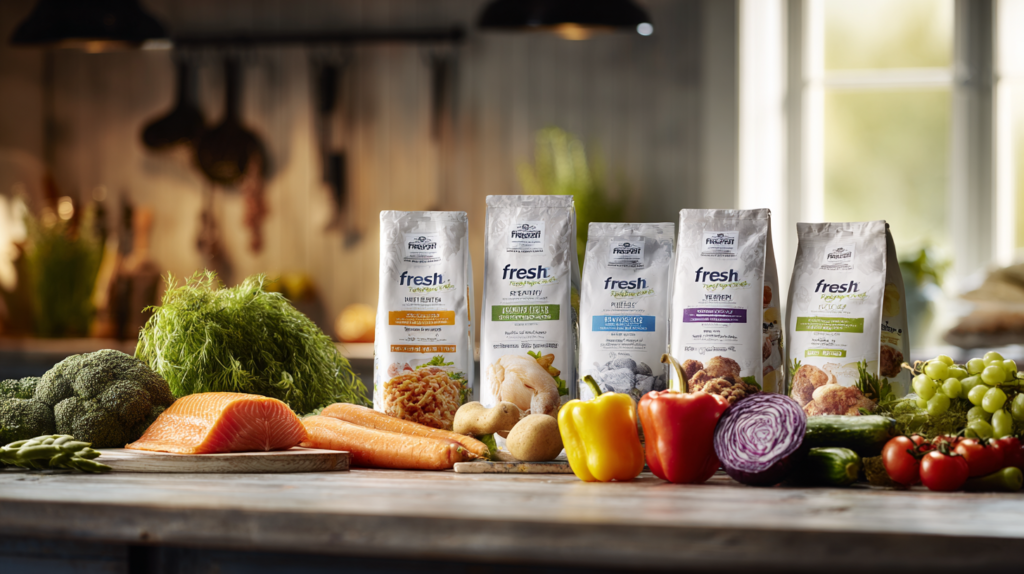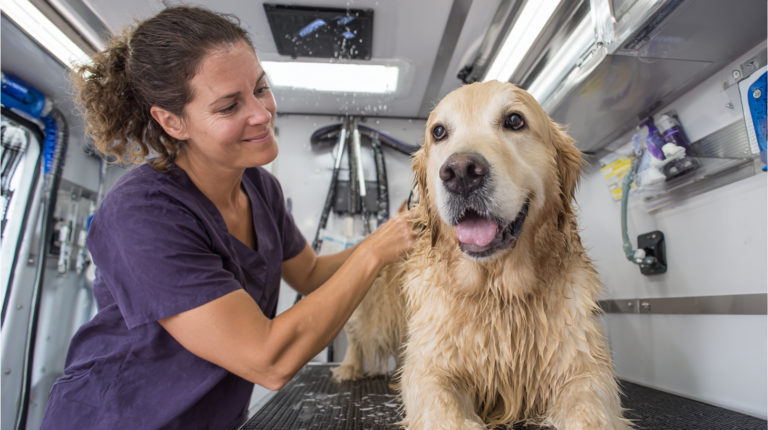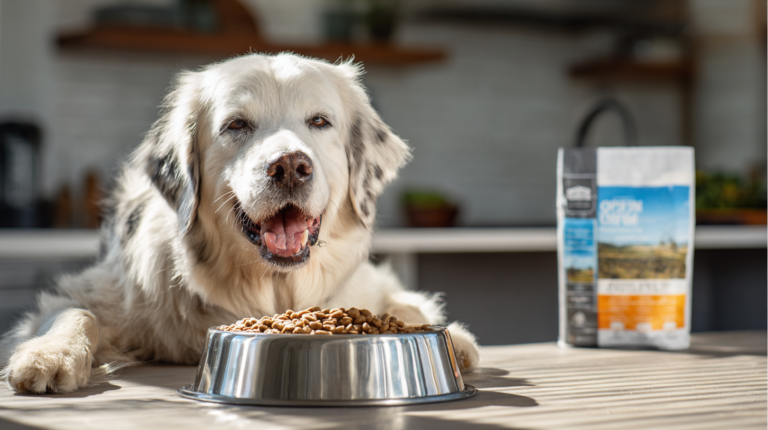Fresh Pet Dog Food offers superior nutrition with real ingredients dogs crave. Discover 7 compelling reasons why fresh dog food leads to happier, healthier pets.
Table of Contents
Did you know that 67% of dog owners report their pets show more excitement at mealtime after switching to fresh dog food? If you’ve ever wondered why your furry friend seems less enthusiastic about their kibble lately, you’re not alone. The pet food industry has undergone a revolutionary transformation, and fresh pet dog food is leading the charge in providing nutrition that dogs naturally crave.
Fresh pet dog food represents a paradigm shift from traditional processed kibble to minimally processed, refrigerated meals made with real, whole ingredients. Unlike conventional dry dog food that can sit on shelves for months, fresh dog food is prepared in small batches, refrigerated immediately, and delivered fresh to your door or local pet store. This innovative approach to canine nutrition mirrors the fresh food movement in human diets, recognizing that fresher ingredients often mean better nutrition and taste.
The growing popularity of fresh pet dog food isn’t just a trend—it’s a response to pet owners’ increasing awareness of their dogs’ nutritional needs. When you examine the ingredient lists of fresh dog food versus traditional kibble, the difference is striking. Fresh options typically feature recognizable ingredients like chicken, sweet potatoes, and green beans, while conventional kibble often contains mysterious-sounding preservatives and by-products that would make any health-conscious pet owner pause.
Why Fresh Dog Food is Revolutionizing Pet Nutrition

The science behind fresh pet dog food is compelling. Traditional kibble undergoes extensive processing at high temperatures, which can destroy vital nutrients and create compounds that may be difficult for dogs to digest. Fresh dog food, on the other hand, is typically cooked at lower temperatures or prepared using methods that preserve nutritional integrity.
Dr. Sarah Mitchell, a veterinary nutritionist with over 15 years of experience, explains: “The difference in bioavailability of nutrients between fresh and processed dog food is significant. Dogs evolved to eat fresh prey, and their digestive systems are optimized for processing fresh, whole foods rather than highly processed alternatives.”
This nutritional superiority translates into tangible benefits that dog owners notice within weeks of making the switch. From shinier coats to increased energy levels, the improvements are often dramatic enough to convince even skeptical pet parents that fresh pet dog food is worth the investment.
Superior Ingredient Quality and Transparency
One of the most compelling reasons dogs love fresh pet dog food is the quality of ingredients used. Fresh dog food companies typically source human-grade ingredients, meaning the meat, vegetables, and grains meet the same safety and quality standards as food intended for human consumption.
When you examine a package of fresh dog food, you’ll find ingredients you can actually pronounce and recognize. Instead of “chicken by-product meal” or “meat and bone meal,” you’ll see “deboned chicken breast” or “ground turkey.” This transparency isn’t just marketing—it represents a fundamental difference in how the food is conceived and prepared.
The sourcing practices of fresh dog food companies often emphasize local, sustainable suppliers. Many partner with farms that practice humane animal husbandry and sustainable agriculture. This commitment to quality extends beyond nutrition to environmental responsibility, which resonates with increasingly eco-conscious pet owners.
Consider the case of Max, a Golden Retriever whose owner, Jennifer, switched to fresh dog food after her vet recommended it for Max’s sensitive stomach. “Within two weeks, Max’s digestive issues completely resolved,” Jennifer reports. “But what really convinced me was when I compared the ingredient lists. The fresh food had six ingredients I could identify and pronounce, while his old kibble had over 40, many of which sounded like chemicals.”
Enhanced Digestibility and Gut Health
Fresh pet dog food offers superior digestibility compared to traditional kibble, and this difference is immediately noticeable to dog owners. The gentle cooking methods used in fresh dog food preparation help break down proteins and carbohydrates in ways that make them easier for dogs to absorb and utilize.
The digestive benefits of fresh dog food are particularly pronounced for dogs with sensitive stomachs or food allergies. The limited ingredient lists typical of fresh dog food make it easier to identify and avoid potential allergens. Additionally, the absence of artificial preservatives, colors, and flavors reduces the likelihood of digestive upset.
Probiotics and prebiotics are often naturally present in fresh dog food ingredients or added specifically to support gut health. A healthy gut microbiome is crucial for dogs’ overall health, affecting everything from immune function to coat quality. The fiber content in fresh vegetables and fruits provides natural prebiotics that feed beneficial gut bacteria.
Dr. Michael Chen, a veterinary gastroenterologist, notes: “I’ve seen remarkable improvements in dogs with chronic digestive issues after switching to fresh food. The combination of higher digestibility and better ingredient quality often resolves problems that medications couldn’t fix.”
Signs Your Dog’s Digestion is Improving:
- Smaller, firmer stools
- Reduced gas and bloating
- Less frequent vomiting
- Improved appetite consistency
- Better breath (indicating improved gut health)
Irresistible Taste and Aroma
Dogs experience the world primarily through their sense of smell, which is thousands of times more sensitive than humans’. Fresh pet dog food’s natural aromas are significantly more appealing to dogs than the often stale or artificial scents of processed kibble.
The cooking methods used in fresh dog food preparation help preserve the natural flavors and aromas that dogs find irresistible. When fresh ingredients are gently cooked or prepared raw, they retain the natural oils and compounds that make them smell and taste appealing to dogs.
Many pet owners report that their dogs show dramatically increased enthusiasm at mealtime after switching to fresh food. Dogs who previously showed little interest in their meals suddenly become excited and eager to eat. This enthusiasm isn’t just about novelty—it’s a response to food that smells and tastes more like what dogs naturally crave.
The texture of fresh dog food also plays a crucial role in its appeal. Unlike the uniform crunch of kibble, fresh dog food offers varied textures that provide sensory stimulation. Some dogs prefer the softer texture, while others enjoy the chunks of real meat and vegetables that provide different mouthfeel experiences.
Optimal Hydration and Moisture Content
One of the most overlooked benefits of fresh pet dog food is its high moisture content. Traditional kibble contains only about 10% moisture, while fresh dog food typically contains 65-75% moisture. This difference is crucial for dogs’ overall health and well-being.
Many dogs don’t drink enough water throughout the day, leading to chronic mild dehydration that can affect kidney function, joint health, and overall vitality. The high moisture content in fresh dog food helps ensure adequate hydration, which is particularly important for senior dogs or those with kidney issues.
The increased moisture content also aids in digestion and helps dogs feel more satisfied after meals. This can be particularly beneficial for dogs prone to overeating or those struggling with weight management. The additional water content helps create a feeling of fullness without adding calories.
Hydration Benefits Include:
- Improved kidney function
- Better joint lubrication
- Enhanced temperature regulation
- Softer, more comfortable stools
- Reduced risk of urinary tract issues
Customizable Nutrition for Individual Needs
Fresh pet dog food companies often offer customization options that allow pet owners to tailor their dogs’ nutrition to specific needs, age, activity level, and health conditions. This personalized approach to nutrition is impossible with traditional one-size-fits-all kibble.
Many fresh dog food services begin with a detailed questionnaire about your dog’s age, weight, activity level, health conditions, and preferences. This information is used to create a customized meal plan that provides optimal nutrition for your specific dog’s needs.
The ability to customize nutrition is particularly valuable for dogs with special dietary requirements. Senior dogs may need lower protein levels, while highly active dogs require more calories and protein. Dogs with allergies can have specific ingredients eliminated from their meals, while overweight dogs can receive portion-controlled meals designed for healthy weight loss.
Some fresh dog food companies even offer veterinary consultation services, allowing pet owners to work with nutrition specialists to develop the most appropriate diet for their dogs’ individual needs.
Convenient and Time-Saving Preparation
Contrary to what many pet owners assume, fresh pet dog food is often more convenient than traditional feeding methods. Most fresh dog food is pre-prepared and requires no cooking or complex preparation—simply thaw (if frozen) and serve.
Many fresh dog food companies offer subscription services that deliver meals directly to your door on a regular schedule. This eliminates the need for frequent trips to the pet store and ensures you never run out of food. The portioned meals also eliminate guesswork about serving sizes.
The convenience factor is particularly appealing to busy pet owners who want to provide the best nutrition for their dogs without spending hours in the kitchen. Some companies even offer portioned frozen meals that can be stored for weeks, providing flexibility for varying schedules.
The time saved on meal preparation can be redirected toward other aspects of pet care, such as exercise, training, or simply spending quality time with your dog. This convenience factor has made fresh dog food accessible to pet owners who previously thought it would be too time-consuming.
Visible Health Improvements and Longevity Benefits
Perhaps the most compelling reason dogs love fresh pet dog food is the visible health improvements that occur within weeks of making the switch. These improvements are often dramatic enough to convince even skeptical pet owners that the investment is worthwhile.
The most commonly reported improvements include:
Coat and Skin Health: The high-quality proteins and healthy fats in fresh dog food contribute to shinier, softer coats and healthier skin. Many dogs experience reduced shedding and fewer skin irritations.
Energy and Vitality: Dogs often show increased energy levels and improved stamina. This is likely due to better nutrient absorption and the absence of hard-to-digest fillers that can cause energy crashes.
Weight Management: The portion-controlled nature of fresh dog food, combined with higher protein content and better satiety, often leads to healthier weight management.
Dental Health: Some fresh dog foods include ingredients that naturally support dental health, and the improved nutrition can contribute to better overall oral health.
Immune Function: The high-quality ingredients and better nutrition support stronger immune systems, potentially reducing the frequency of illness.
A study published in the Journal of Animal Science found that dogs fed fresh, minimally processed diets showed improved biomarkers for health compared to those fed traditional kibble. The study followed 30 dogs over six months and found improvements in inflammatory markers, digestive health indicators, and overall vitality scores.
Understanding the Economics of Fresh Dog Food
While fresh pet dog food typically costs more than traditional kibble, many pet owners find the investment worthwhile when considering the potential long-term health benefits and reduced veterinary costs. The concentrated nutrition in fresh dog food often means dogs need smaller portions to meet their nutritional needs.
The cost per serving varies depending on the company and your dog’s size, but many fresh dog food services offer competitive pricing when compared to premium kibble brands. When you factor in the convenience of home delivery and the potential for reduced veterinary bills, the economics become more favorable.
Some pet owners choose to partially incorporate fresh dog food into their dogs’ diets, using it as a meal topper or feeding fresh food for one meal per day while using high-quality kibble for the other. This approach can provide many of the benefits of fresh food while managing costs.
Common Myths About Fresh Dog Food Debunked
Myth 1: Fresh dog food is too expensive for average pet owners. Reality: While fresh dog food does cost more upfront, the concentrated nutrition often means smaller portions are needed. Many owners find the cost comparable to premium kibble when considering the improved health outcomes.
Myth 2: Fresh dog food is difficult to store and prepare. Reality: Most fresh dog food comes pre-prepared and requires minimal effort. Many options can be stored frozen for weeks and simply thawed before serving.
Myth 3: Dogs can’t digest raw or fresh food properly. Reality: Dogs have evolved to digest fresh, whole foods. In fact, many dogs digest fresh food more easily than highly processed kibble.
Warning Signs: When to Consult Your Veterinarian
While fresh pet dog food is generally safe and beneficial for most dogs, there are situations where veterinary consultation is recommended:
- Dogs with serious health conditions should have dietary changes supervised by a veterinarian
- Puppies have specific nutritional needs that may require specialized fresh food formulations
- Dogs taking medications may need dietary adjustments to prevent interactions
- Any sudden changes in appetite, energy, or digestive function should be evaluated by a veterinarian
Expert Tips for Transitioning to Fresh Dog Food
Start Gradually: Transition over 7-10 days by mixing increasing amounts of fresh food with decreasing amounts of current food.
Monitor Your Dog’s Response: Watch for improvements in energy, coat quality, and digestive health during the transition period.
Choose Reputable Brands: Select companies that follow AAFCO guidelines and use human-grade ingredients.
Consider Your Dog’s Preferences: Some dogs prefer certain proteins or textures, so be willing to try different options.
Maintain Consistency: Once you find a fresh food your dog loves, maintain consistency to avoid digestive upset.
Step-by-Step Guide to Choosing the Right Fresh Dog Food
- Assess Your Dog’s Needs: Consider age, size, activity level, and any health conditions.
- Research Companies: Look for companies with transparent ingredient sourcing and feeding guidelines.
- Read Reviews: Check reviews from other pet owners with similar dogs.
- Start with Trial Sizes: Many companies offer trial packages to test your dog’s preference.
- Monitor the Transition: Keep a log of your dog’s response during the first few weeks.
- Consult Your Veterinarian: Discuss the change with your vet, especially if your dog has health issues.
- Adjust as Needed: Be prepared to modify portions or try different formulations based on your dog’s response.
For more expert pet care tips and product recommendations, visit BlithePet.com — your trusted source for pet wellness.
The Future of Fresh Pet Dog Food
The fresh pet dog food industry continues to evolve, with new companies entering the market and existing brands expanding their offerings. Innovations include personalized nutrition based on genetic testing, sustainable packaging solutions, and even fresher delivery methods.
As more pet owners become aware of the benefits of fresh dog food, the industry is responding with more affordable options and greater accessibility. This trend suggests that fresh dog food will become increasingly mainstream, potentially revolutionizing how we think about pet nutrition.
The growing body of research supporting fresh, minimally processed diets for dogs will likely drive further adoption. As veterinary schools begin incorporating fresh food nutrition into their curricula, we can expect more veterinary professionals to recommend fresh diets for their patients.
Educational Table
Markdown Version:
FAQ Section :
Q: Is fresh pet dog food safe for all dogs?
A: Fresh pet dog food is generally safe for healthy adult dogs when properly formulated. However, puppies, senior dogs, and dogs with medical conditions should transition under veterinary supervision to ensure their specific nutritional needs are met.
Q: How long does fresh dog food last once opened?
A: Most fresh dog food should be consumed within 3-4 days of opening when stored in the refrigerator. Unopened packages typically last 7-14 days refrigerated or several months when frozen, depending on the specific product.
Q: Can I mix fresh dog food with kibble?
A: Yes, many pet owners successfully mix fresh dog food with high-quality kibble. This approach can provide some benefits of fresh food while managing costs. However, ensure both foods are nutritionally complete and balanced for your dog’s needs.
Q: Will my dog lose weight on fresh dog food?
A: Weight changes depend on portion sizes and your dog’s individual metabolism. Many dogs maintain healthier weights on fresh food due to better satiety and portion control, but weight loss isn’t guaranteed and depends on overall caloric intake.
Q: How do I know if fresh dog food is working for my dog?
A: Positive signs include increased energy, shinier coat, smaller and firmer stools, improved appetite, and better breath. Most improvements are noticeable within 2-4 weeks of consistent feeding.
Q: Is fresh dog food worth the extra cost?
A: Many pet owners find fresh dog food worth the investment due to visible health improvements, potential reduction in veterinary costs, and peace of mind about ingredient quality. The value depends on your budget and priorities for your dog’s health.
Q: Can I make fresh dog food at home?
A: While possible, homemade fresh dog food requires careful planning to ensure nutritional completeness. Commercial fresh dog foods are formulated by veterinary nutritionists to meet AAFCO standards, making them a safer option for most pet owners.
Conclusion
Fresh pet dog food represents more than just a premium pet food option—it’s a return to the type of nutrition dogs evolved to thrive on. The seven reasons dogs love fresh food—superior ingredients, enhanced digestibility, irresistible taste, optimal hydration, customizable nutrition, convenience, and visible health improvements—make a compelling case for considering this nutritional upgrade.
The transformation in dogs’ health and happiness after switching to fresh food is often dramatic enough to convince even the most skeptical pet owners. From increased energy and shinier coats to better digestion and enhanced longevity, the benefits extend far beyond simple nutrition.
While the initial cost may be higher than traditional kibble, the long-term benefits to your dog’s health and well-being often justify the investment. The convenience of modern fresh dog food delivery services makes it easier than ever to provide this superior nutrition without significant time investment.
As the pet food industry continues to evolve, fresh dog food is positioning itself as the gold standard for canine nutrition. The combination of scientific backing, visible results, and increasing accessibility makes fresh pet dog food an attractive option for pet owners who want the best for their furry family members.
Have a similar experience with your pet? Share it in the comments below! Don’t forget to check out our other helpful guides at BlithePet.com.







